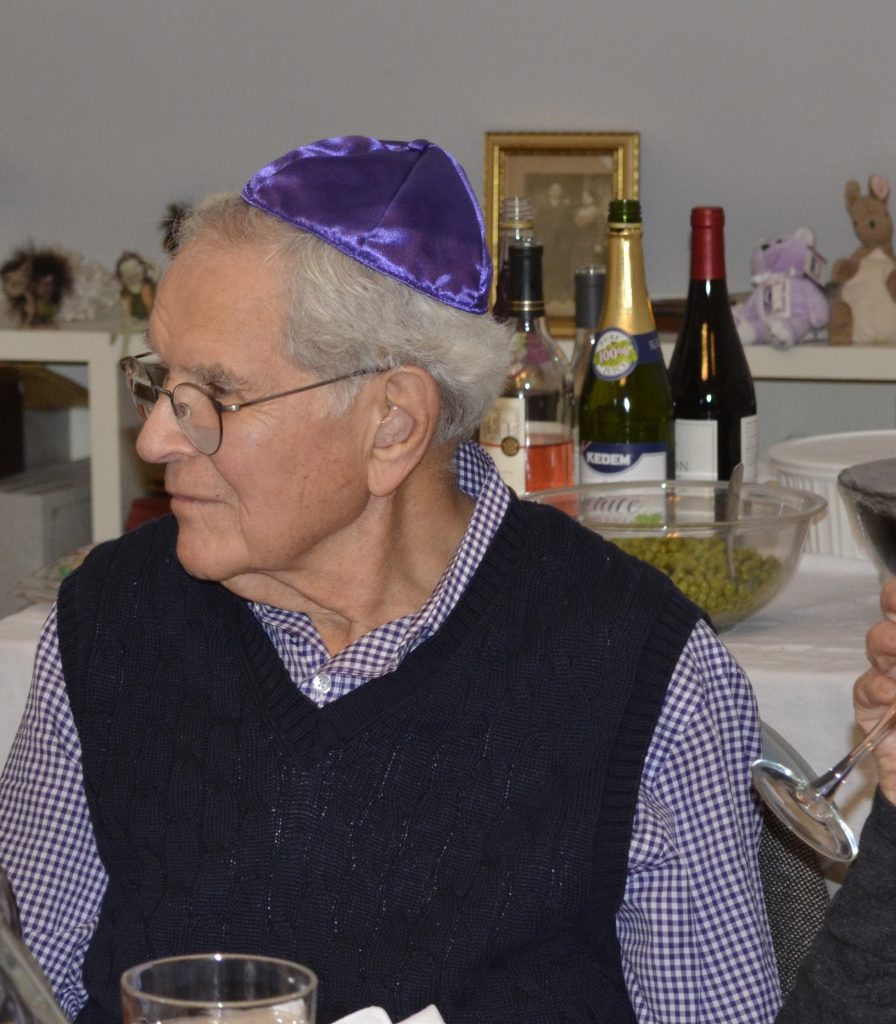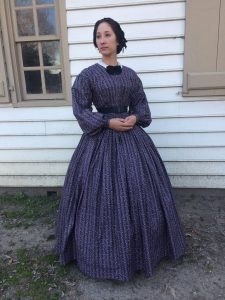My friend Allan Falk sent me this wonderful story about an episode from his legal career which involved a synagogue in Michigan’s Upper Peninsula. What follows is his own retelling.
__________________
Word reached me (Allan Falk) from a friend I’ll call Jim that his old boyhood shul in Iron Mountain, Michigan, Anshe Knesset Israel Congregation, was down to 4 living members, one of whom was a widow who is not actually Jewish herself. The surviving congregants had decided to sell the shul (and completed a sale to a non-profit drug treatment outfit early in 2020). But while the shul was on the market, the local tax assessor put the property on the tax rolls in 2019 (without proper notice), and in order to complete the sale they were going to have to pay the property tax of about $1500, plus a late penalty.
Of course, I inquired how the assessor had failed to give notice. She made a half-hearted, ill-conceived attempt to do so–she mailed notice to a person who had been treasurer of the congregation many years earlier, but not to his current address which had been the Iron Mountain cemetery for about 25 years. She then resent notice to a person with a similar name to someone else in Georgia, who had no relationship to anyone or anything in or near Iron Mountain or connected with the synagogue. This bit of idiocy was in the context of the congregation President walking into City Hall monthly to pay the utility bill, and being known to the City Treasurer–in fact, it was on one such occasion that in casual conversation the City Treasurer mentioned that the synagogue’s property taxes were past due that brought the problem to anyone’s attention.
Jim also indicated that the assessor had put the property on the tax roll after inspecting it. I asked how the assessor gained access for her inspection, and it turned out the assessor and the realtor were friends, so the realtor, without checking with anyone connected to the synagogue, gave the assessor the key. The assessor saw that there were books on the floor (the book shelves had been given to the Green Bay, Wisconsin Chabad) and concluded that no religious services had been held for some time (the last formal service had been a few years earlier, when a family reunion brought a large group back to Iron Mountain). The passage of more than a year (and failure of the congregation to protest the assessment, of which it had no knowledge, at the March, 2019 Board of Review meeting) meant that the tax issue could not be favorably resolved in any Michigan court or similar proceeding (such as the Michigan Tax Tribunal). Thus, I began considering, literally, how to make a federal case out of the matter.
So, after my initial legal research, I wrote a letter to the Mayor, City Treasurer, and Assessor, pointing out that whether or not religious services had been held in the past millennium or not, under a precedential Michigan Court of Appeals decision the property remained exempt from taxation until put to a different, non-exempt secular use. I also note that the realtor had no authority to use the key for any purpose other than showing the property to a potential buyer, the assessor not having any intention to buy, and thus, under other law I cited, the assessor’s entry into the property was a trespass, and when done for purposes of inspection in her official capacity, was a violation of the congregation’s 4th amendment right against unreasonable searches and seizures. I propose that, if the City will merely refund the $1637 in property taxes and late fees, the matter would be fully resolved. But I further warned that if my proposal were rejected, the City and its officials involved would be facing a possible federal court lawsuit under the Civil Rights Act of 1870, and be liable not only to refund the $1637, but to pay damages and my attorney fees. My letter, which I vetted with Jim and his group (lest my scorched earth approach leave them uncomfortable), allowed ample time for a response.
Two weeks later I got a phone call from a person who identified himself as the attorney for the City of Iron Mountain (he’s a senior partner in the largest law firm in town). He asked for more time to respond, and I agreed. The time elapsed, so I called him back–he claimed he needed more time, and again I consented. But the time again expired, and when I follow up he promises (it’s Monday) he’ll definitely have an answer for me on Friday–he gives me his word (N.B. It is unethical, and grounds for discipline, for a lawyer to make a false statement to anyone at any time–hard to believe, I know). The following Monday, having heard nothing, I call and find he is on vacation. I e-mail him, asking if perhaps his boss ordered him to take vacation, as it seems to have come as a surprise to both him and me. He writes back, telling us to pound sand (he’s a bit more lawyerly, but that’s the gist of it).
So I go back to Jim and his group, noting that their choice is to admit they were bluffing and walk away, or authorize me to file suit. After much consternation about the optics and a last attempt at compromise by having their President speak with the mayor to determine if the city attorney was actually doing as instructed (apparently he was), they give me the green light, and I file my complaint on behalf of the synagogue, Jim and his brother, the president, and the widow in federal court: Count I, illegal search and seizure (4th Amendment), Count II, denial of due process (lack of notice–14th Amendment), Count III violation of synagogue’s 1st Amendment rights by rescinding its tax exemption, Count 4 common law trespass. The defendants are the City, the Mayor, the Treasurer, and the Assessor.
About 10 days after process is served, I get an e-mail from an attorney for the assessor’s insurer, offering us our $1637 to dismiss the lawsuit. In response, I note that ship had sailed–the opportunity to walk away that cheaply had been offered, and all we got was rude treatment in response. After suggesting that, at this point, it would require reimbursement of our filing fee ($400), sheriff’s fees for service of process (about $75), and payment of my attorney fees (which I estimate at more than $10K), I suggest he should make a more reasonable offer–had he come back with $5K or anything close to it, I’m pretty sure we’d have called it a day. But he refuses the bait, and no further settlement communication results.
A week later, attorneys hired by two insurance companies (one for the City, one for the assessor) appear and file answers that are pure, unadulterated pettifoggery (denying most everything, or claiming to know nothing, including about events in which their clients were directly and personally involved, but admitting the fact of putting the synagogue on the tax rolls). Recognizing from their answers I made some assertions that might be problematic if I try to prove them in court, I file an amended complaint (as permitted by the federal rules), and they refile essentially the same answers.
Under the federal rules, each party must now make “initial disclosures”. I do so carefully, with strict attention to the requirements of the rules, and amass photographs, documents, and affidavits (including 1 from the Chabad rabbi averring that, as an expert in synagogue operations, when he visited to take bookshelves and 2 shtenders a month or so before the assessor’s inspection, the interior and exterior looked to him like a fully functional synagogue). Their initial disclosures are intentionally obstructive and obfuscatory, and not at all what the rules require.
So now I file a motion for summary judgment, noting that, from what they have admitted, plus what they have failed to disclose about events in which they were directly involved, it is clear that we have a right to recover damages on each and every claim. They file answers to our motion which, again, suggest their attorneys got law degrees by mail from tRump University or a gumball machine. I promptly file a reply brief that blows their puerile arguments out of the water.
At this point the federal magistrate suggests that, before a ruling on our motion for summary judgment, an “early settlement conference” might be a good idea. I agree, provided the opposition is prepared to participate by tabling a serious settlement offer and not repeating anything like their prior de minimis and absurd proposal. This requires each side to supply the magistrate with details of its settlement posture, in confidence. We advise the magistrate our president wants $15K for her travails, and $5K each for Jim and his brother Jack (the widow, who lives in Wisconsin, has by now dropped out), plus $5000 for the synagogue, and my attorney fees. I compile a separate, detailed brief on attorney fees to which I attached details of the hours I’ve invested, which I provide both to the magistrate and opposing counsel.
By the time of the Zoom conference, I’m in Florida visiting my sister, so I participate from her lanai. My internet connection keeps crashing, but Jim and I soldier through, and we begin by offering to settle for $120K, plus $20,000 for my attorney fees . The magistrate returns to tell us they will offer $50K, but including my attorney fees. I point out to the magistrate that I am uncomfortable negotiating my attorney fees as part of a package deal, as that creates a conflict of interest. But the magistrate is insistent (he wants this case off his docket), so with Jim’s approval, noting that I have the $30,000 in actual damages in hand to fully satisfy my clients, I propose $70K for attorney fees, or $40K if they will apologize in writing for their mistreatment of the synagogue and its members. An hour later he returns with a 2nd counteroffer–$75K total ($60K to be paid by the assessor, $15K by the City), no apology. It’s late in the day, my clients really don’t want to continue the lawsuit (and based on what the magistrate has told me, I’m not savoring the prospect of trying to convince a UP and Western Michigan jury to award a bunch of money to Jews, or especially to an elderly Jewish lawyer with a J.D. from Yale Law School), so we accept, noting that the defendants outrageously prefer to have the taxpayers pay extra to settle in order to avoid apologizing (the magistrate says nothing, but gives me a knowing smile).
So, rather than pay $1637 (or less–I’m sure my people would have said “OK” if the City offered to refund half or so in response to the opening missive), the City and its assessor and their insurers and attorneys preferred to make an actual, federal case out of their own folly, and then pay $75,000 to make it go away. As Dave Barry would say, “I’m not making this up”. One usually expects that idiots, once represented by counsel, will moderate their idiocy, but these asshats decided instead to up the ante, with entirely predictable results. (I’m informed the Mayor reported to City Council that, because he had “held firm”, they were able to settle on “favorable terms”. I have no idea what happened to the city’s or assessor’s insurance premiums after that, or whether the City continues to use the same imbecile or his law firm as its regular attorney.) The magnitude of narishkeit is even worse than it appears–I’m familiar with municipal insurers, and there’s always a deductible for attorney fees, at least $10K if not more. So the City and the Chelmites in charge embarked on a course of action that was going to cost the treasury at least 6X as much in out-of-pocket attorney fees as we were requesting be refunded, the epitome of “We’re losing on every transaction, but we’re planning to make it up on volume.”
The president joined Jim and his brother in donating $5K each from the settlement to the non-profit (but I’m still glad I insisted that Jim and his brother both give me a dollar figure, rather than waive individual claims for damages). The synagogue’s $5K was disbursed to Jewish 501(c)(3) groups that the AKIC board selected. As with any good fairy tale, everyone (plaintiffs and idiots alike) lived happily ever after.
_______________________________
And to my wonderful friend, Allan Falk, I say, “Kol hakavod l’kha!”, You deserve full honor for your victory!




